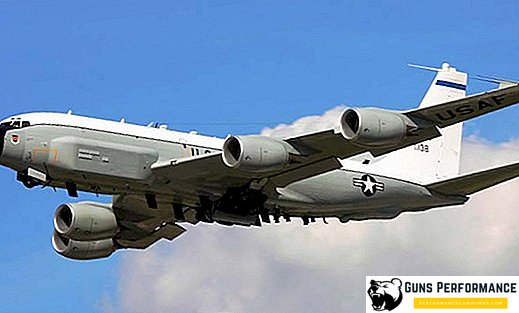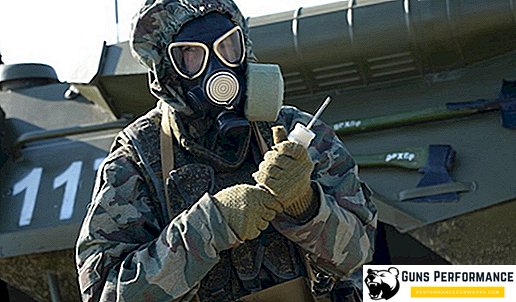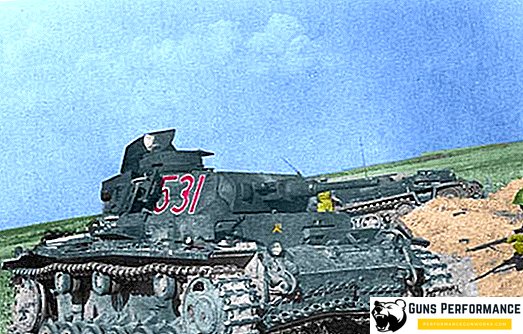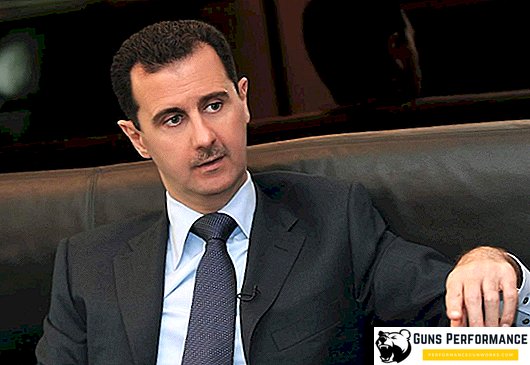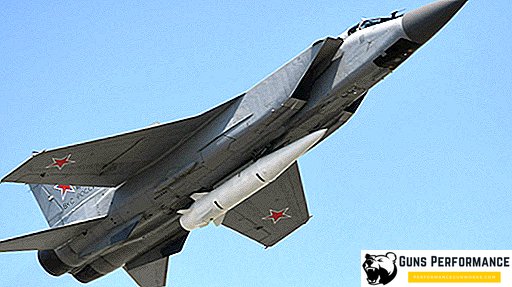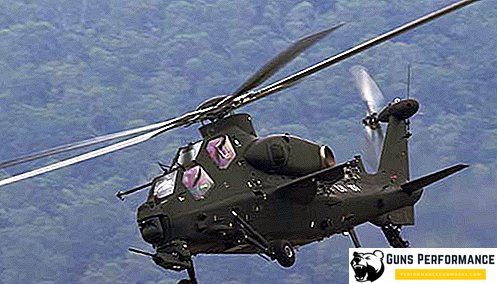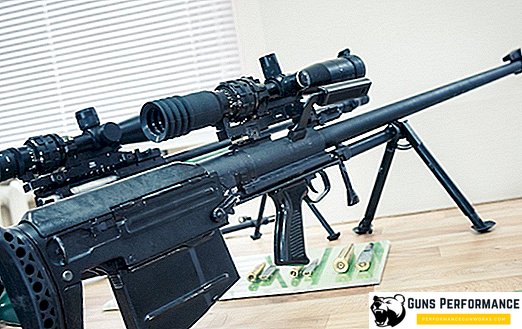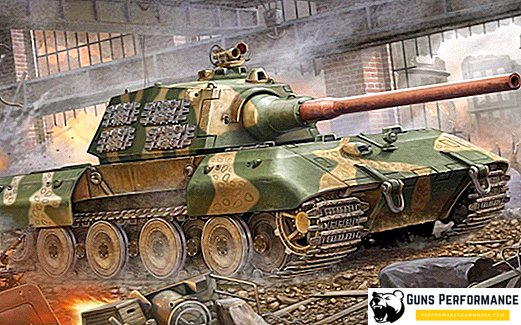
The E-100 is a German heavy (or rather, super heavy) promising tank during the Second World War. This combat vehicle was part of the so-called E-series, consisting of five tanks and self-propelled units. The Germans developed these combat vehicles, taking into account all the experience gained in the production of tanks and their combat use.
The development of E-series combat vehicles began in the second half of the war. Despite the acute shortage of resources, the Germans focused on the development of new machines, instead of increasing the production of old models of armored vehicles that had already been run by the war. It should be noted that none of the E-series combat vehicles were ever brought to mass production. You also need to say that the development of new types of military equipment was entrusted to companies that had not previously engaged in the production of similar products.
The German E-series consisted of the following machines:
- E-10. The project is a small reconnaissance tank, which could be used to destroy enemy armored vehicles. The mass of the machine was planned at the level of 15 tons, the tank was supposed to be armed with a Pak 40 L / 48 gun (75 mm).
- E-25. Project SAU weighing 25-30 tons. The armament is the 75mm Pak L / 70 gun.
- E-50. The project is a medium tank weighing about 50 tons.
- E-75. Draft heavy tank weighing about 75-80 tons.
- E-100. Super heavy tank, which was supposed to be an alternative to the famous "Mouse". The mass of the giant was supposed to reach 130 or 140 tons.
The most famous of these five, of course, is the super-heavy tank E-100. The dimensions of this tank were really gigantic, but the Germans could not even complete the prototype. Many experts believe that the technical solutions used in the construction of the E-100, look much more successful than its direct competitor - the tank Maus. In addition, from the above series of combat vehicles, the creators of the E-100 managed to move the farthest. We present you the history of the creation of the tank E-100 and an overview of the features of its design.

History of creation
In May 1942, a special research group was created in Germany to develop new types of armored vehicles, taking into account the entire experience of its use in three years of world war. This group was headed by E. Knipkamp, Chief Designer of the Tank Armaments Test Department.
This idea was a personal initiative of Knipkamp, the work went slowly, since the main resources were involved in the production of mass-produced armored vehicles, as well as the development of new vehicles, according to army orders. However, enthusiasts still managed to achieve certain results.
Were formulated the basic principles that should be followed in the development of new combat vehicles. Designers believed that it was necessary to maximize their protection and increase their ammunition, unify most of the components and mechanisms of new combat vehicles, in order to simplify and reduce the cost of their production. A number of proposals were also put forward that should have simplified the repair and maintenance of tanks and self-propelled guns. The power plant and transmission was proposed to move to the stern, combining into a single unit, and make new cars rear wheel drive.
However, the work of the initiative group began too late - Germany was already losing the war and no new combat vehicles could remedy the situation.

Development of the E-100 tank began in July 1943 in the city of Friedberg. Design, and in the future and the manufacture of a new combat vehicle engaged the company Adler. Due to the acute shortage of raw materials in 1944, Hitler ordered the completion of all work on the creation of new heavy tanks, the order concerned both the E-100 and Maus, which was developed by Ferdinand Porsche. However, with respect to the E-100, the Führer’s order was never executed: although at a slow pace, the work on the machine continued.
The pre-production tank model was manufactured at the Henschel plant. By the beginning of 1945, only the hull of the new tank, its chassis and power plant was ready. They did not have time to make the tower by this moment, therefore on tests it was replaced by a mass-dimensional model.
In the spring of 1945, the unfinished pre-production model E-100 was captured by the British. The British soldiers loved to take photos against the background of the Nazi giant. In the summer of 1945, the car was sent to the UK for general study. Subsequently, she, unfortunately, was cut for scrap.

Description
The super-heavy tank E-100 was made according to the classic German tank design scheme: with the power compartment in the stern of the tank and the transmission in the bow. The weight of the new tank was planned at 140-150 tons; the steel giant was to be serviced by six crew members: a driver, a radio operator, a commander, two loaders and a gunner. The places of the last three crew members were in the tower.
The hull and the turret of the combat vehicle had rational angles of inclination, which increased their resistance to the hit of enemy shells. The lower (tilt 50 °) and upper (tilt 60 °) frontal armor plate had a thickness of 200 mm, which made the tank almost invulnerable when fired from the front. Impressive was the reservation of the sides (120 mm + outer screen) and the stern (150 mm). Even the bottom of the E-100 had a serious armor protection - 80 mm.

Initially, the E-100 planned to install the tower from the tank Maus, later the designers offered two more versions of the tower. One of them was to be the Mausturm II tower, manufactured by Krupp. It was distinguished by thinner armor (80 mm) and a frontal sheet set at an angle. The appearance of the second version of the E-100 tower is unknown, since its drawings were destroyed, and a full-scale sample was not made.
For the E-100, several weapon options were offered, but none of them were implemented in metal. Initially, they wanted to install a 12.8 cm KwK 44 L / 55 gun and a machine gun attached to it on the tank. However, later this seemed a little to the designers, and it was decided to equip the E-100 with a 150-mm cannon 15 cm KwK 44 L / 38, it was for her sake that the second tower was designed. However, after minor modifications, this gun was able to be put in the No. 1 tower. Another option was considered with the installation on the E-100 of the most powerful gun 17.3 cm KwK 44.

The undercarriage of the car has been reworked taking into account the huge weight of the tank. Instead of the usual torsions, Belleville springs were used, which made room in the tank hull. In addition, a similar design of the chassis was much more maintainable. Previously, German repairmen had to dismantle almost half of the undercarriage to replace one roller.
For E-100 tracks were made, the width of which reached 1000 mm. Naturally, with such dimensions the car did not fit onto railway platforms, so the tank had to be equipped with “transport” tracks with a width of 550 mm. The use of "combat" wide caterpillars made it possible to reduce the specific pressure on the ground of the 140-ton giant to 1.4 kg / cm2. Although, of course, it was very inconvenient to change them after and before the car began to be transported.
In general, the chassis of the E-100, most experts praise, noting its simplicity compared with other German cars, as well as maintainability. However, there is one "but": the springs for the tank were quite expensive and difficult to manufacture, which could be a serious problem for the belligerent Germany.

Initially, they wanted to equip the tank with a Maybach HL 230P30 engine (700 hp.), And in the future put it on a Maybach HL234 with a capacity of 1,200 liters. with. In theory, he had to accelerate the tank to 40 km / h (which looks unlikely), but the production of a more powerful engine was not mastered until the end of the war. However, even with the Maybach HL234 engine, the E-100 had a specific power of only 8.5 liters. S. / ton, which is clearly not enough for a combat vehicle.
Instead of an epilogue
The E-100 was a rather interesting machine, however, it is obvious that even the mass production of these tanks could not change the course and natural outcome of the Second World War. Moreover, spending resources on various unreal projects, the leadership of the Third Reich only brought its inevitable end nearer. Why, suffocating from the shortage of all and all of Germany, did it take to build land forts on caterpillars, probably, even its leadership could not really explain. Probably, like all dictators, Hitler was just fond of gigantism.
Germany, which practically had no resources, entered the war at once with the three largest world states, was already doomed to defeat. And no miracle weapon could save her.



